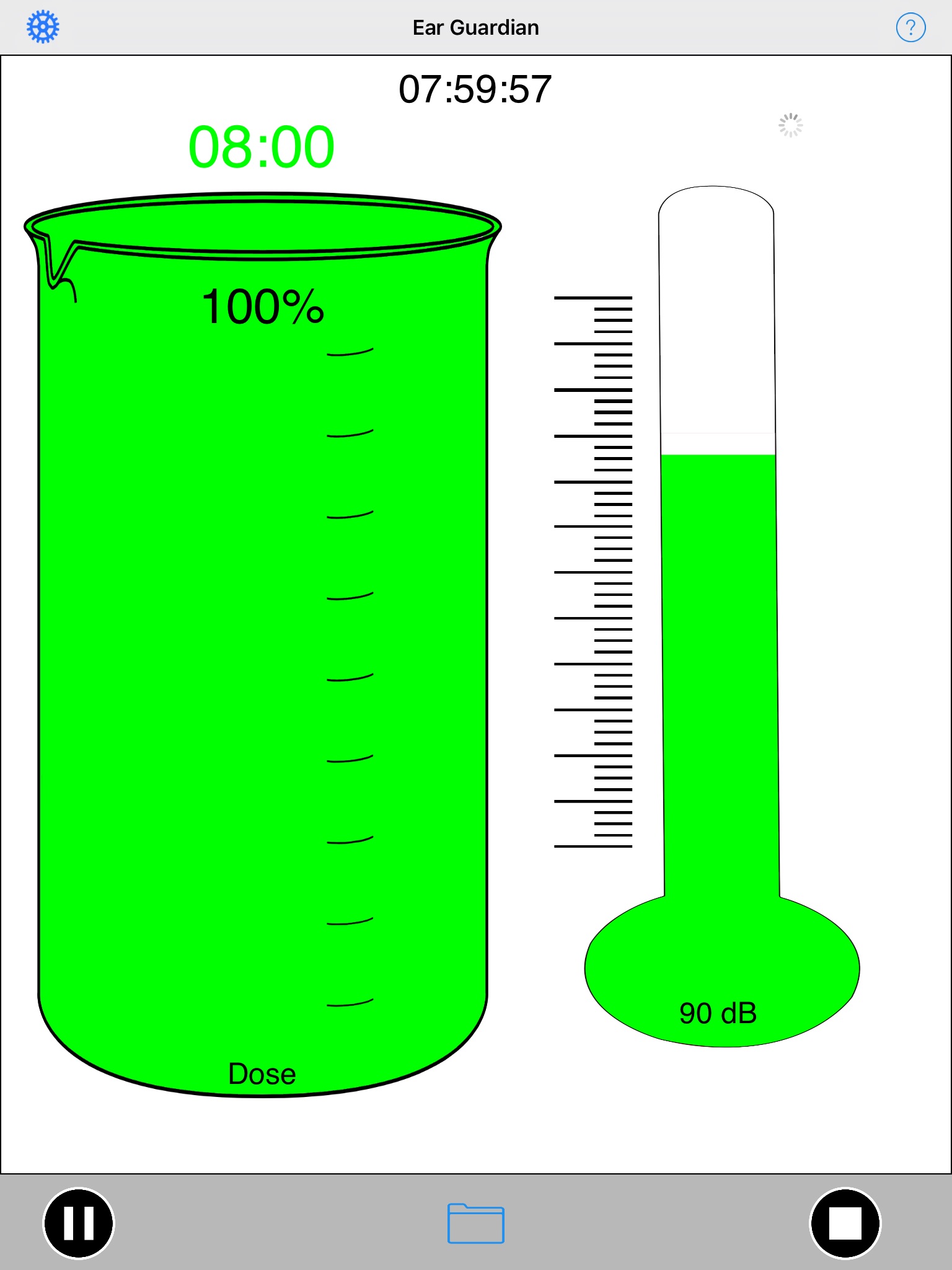
Ear Guardian app for iPhone and iPad
Developer: Andrew Smith
First release : 28 Dec 2021
App size: 18.93 Mb
Ear Guardian is an app that has been designed to help visualize dangerous exposure to sound. This is accomplished by using two different tools in parallel: a DOSE meter and a Sound Level Meter, both following applicable standards.
The DOSE meter is based on the legislation that allows 85 dB for 8 hours in Sweden. This is like a “volume” of sound, depicted by the bowl in the app. When sound is exposed, the “volume” decreases and when the bowl is empty, no more sound is allowed. There are two time units, (1) elapsed time and (2) time remaining for the allowed DOSE (sound exposure).
The Sound Level Meter measures dangerous peaks or transients in the sound. This is accomplished by using an “impulse detector” according to the sound standard. The Ear Guardian app is using 90 dB for the yellow and 100 dB for red. Below, 90 dB, the color is green.
Ear Guardian has been developed within the project Med öra för orkester (With Ear for the Orchestra) that is a project run by the Swedish Orchestra Association. The Association monitors and works for orchestras abilities to perform concerts, recruit new musicians and receive support for their activities. Med öra för orkester works to help individual musicians who suffered from hearing problems, orchestras assist with advice on improving the acoustic environment and spread prevention knowledge in the areas of sound and hearing. The project also offers various training courses for orchestras and schools. More information is available at www.orkesterora.nu and at the projects Facebook page (https://www.facebook.com/medorafororkester/). The project is funded by Arvsfonden, which allocates aid to non-profit organizations and working for children, young people and people with disabilities.
DISCLAIMER: An iPhone is not able to measure according to the law but may give an indication of how dangerous the sound is. It is important to remember that the microphone is at the bottom of an iPhone and on the top on an iPad. The microphone must always point "outwards toward the sound" to minimize the errors that the device is making. If you want to measure accurately (according to standards), you can easily connect an iTestMic2 (Type-2) or an iPrecisionMic (Type-1). These microphones must also be placed correctly. Contact us for further information.
